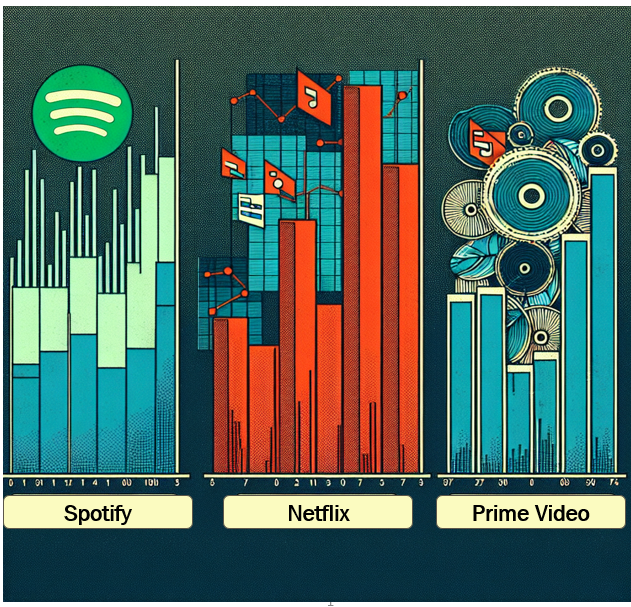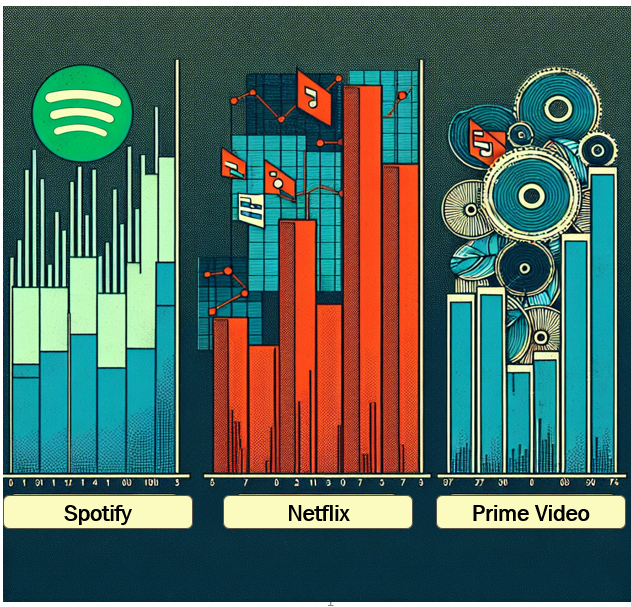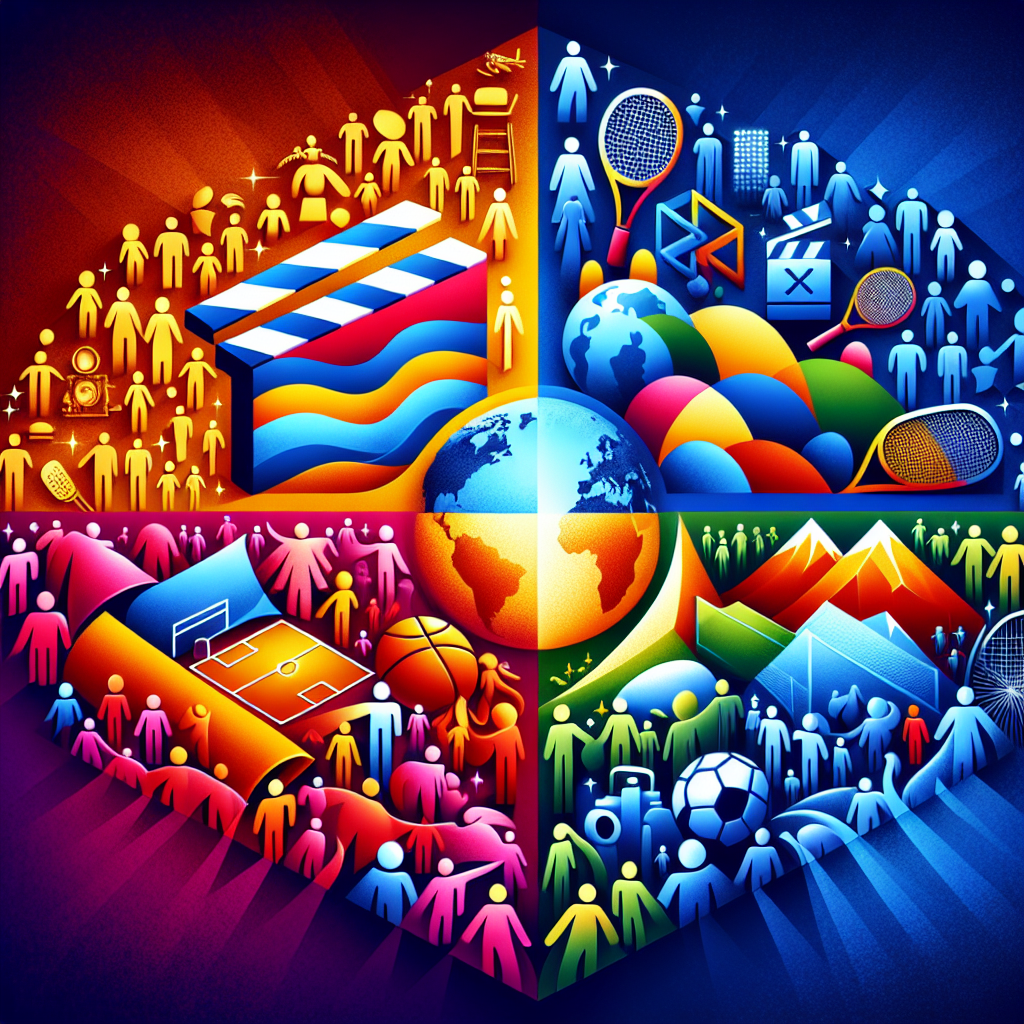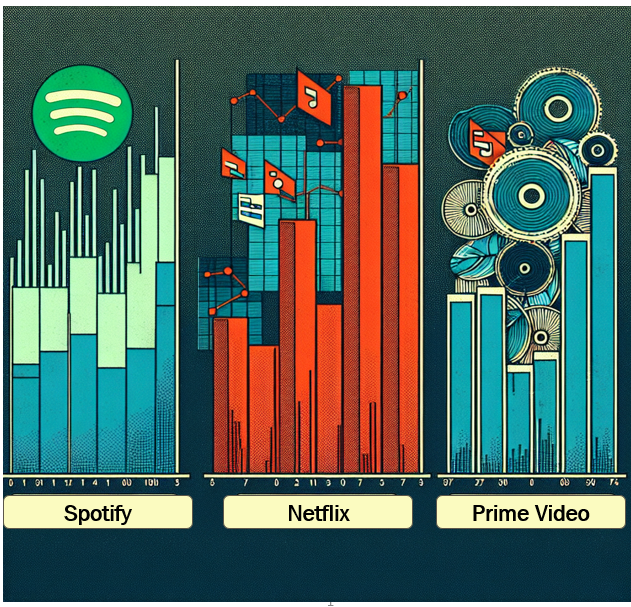Cannes Lions 2025 Gold Winner Analysis Part 3
Engagement-Creative B2B
- "UN.patent" – Renault
What Happened
- Campaign: UN.patent (Universal Patent)
- Brand: Renault
- Agency: Publicis Conseil
- Film Link:
- Category: Creative B2B Lions, Corporate Purpose & Social Responsibility (Engagement)
- Award: Gold Cannes Lion 2025
- Launch: February 2025, 4th World Ministerial Conference on Road Safety, Marrakech
Description:
Renault launched the "UN.patent" initiative, making its cutting-edge electric vehicle safety innovations—starting with the "Fireman Access"—freely available to the entire global automotive industry. Developed in partnership with firefighters, Fireman Access allows emergency services to extinguish an electric vehicle battery fire in under 10 minutes (compared to hours for standard EVs), drastically reducing both response time and water usage.
By open-sourcing this technology, Renault supports the United Nations’ road safety goals and underscores that safety should be a universal right, not a competitive advantage. The campaign included a minimalist, cinematic film, double-page press spreads, social media, and a dedicated open-collaboration platform for licensing.
Why It Worked
- Purpose-Driven Innovation: Renault prioritized human safety over competition, positioning itself as a global leader in responsible mobility and corporate citizenship.
- Concrete Social Impact: By open-sourcing a life-saving technology, the campaign delivered immediate, measurable benefits for first responders and EV drivers worldwide.
- Strategic Partnerships: Collaborating with the UN and firefighting professionals lent credibility and urgency, amplifying the campaign’s authority and reach.
What We Can Learn
- Open-Source for Good: Sharing proprietary technology can elevate a brand from category player to industry leader and changemaker.
- Align with Global Goals: Supporting UN initiatives or other international causes gives campaigns broader relevance and impact.
- Put People Before Product: When brands champion human rights and safety, they earn trust, loyalty, and lasting cultural value.
2.JCDecaux Spain – "Still Open" & "Meet Marina Prieto" Awards Overview
Awards Won
- "Still Open"
- Gold Lion: Creative B2B category
- Silver Lion: Outdoor category
- "Meet Marina Prieto"
- Bronze Lion: Creative Strategy category
"Still Open" – JCDecaux Spain x DAVID Madrid
What Happened
After devastating floods in Valencia left many small businesses shuttered, JCDecaux and DAVID Madrid launched "Still Open." Using Madrid Metro’s OOH network, they displayed life-sized posters of 19 affected shops and their owners, each with emotional stories and QR codes for donations. The campaign turned closed storefronts into active commerce and support channels, reaching over 2.5 million daily commuters and raising both funds and awareness for recovery. Businesses could also join the campaign via a dedicated website, expanding the solidarity effort.
Watch the case film:
Why It Worked
- Real Social Impact: The campaign provided direct, tangible support for small businesses, not just awareness.
- OOH as a Community Tool: Transformed outdoor advertising from pure media into an engine for social good and local commerce.
- Scalable and Participatory: Enabled donations, business participation, and ongoing solidarity through digital integration.
What We Can Learn
- Purposeful Media Amplifies Value: OOH can do more than advertise—it can foster real-world change and community resilience.
- Combine Storytelling with Action: Emotional narratives paired with clear calls-to-action (QR codes, donations) drive deeper engagement.
- Solidarity Sells: Supporting local businesses in times of crisis builds brand reputation and strengthens public trust.
Creative Data
"Hidden Tags" Campaign Analysis
What Happened
- Campaign: Hidden Tags
- Brand: IKEA Portugal
- Agency: Uzina
- Award: Cannes Lions 2025 (Gold, Data story telling)
- Video Link:
Description:
IKEA Portugal tackled the widespread perception that its furniture isn’t durable. The brand invited people to find the hidden manufacturing date tags on their IKEA furniture and join a nationwide hunt to discover the oldest IKEA piece in Portugal. Thousands of tags were submitted—many predating the first IKEA store in the country. The oldest piece dated back to 1969. The campaign turned these tags into proof of long-lasting quality, inspiring trust and even influencing the secondhand market, where sellers began using the tags as a sales argument.
Why It Worked
- Turned Perceived Weakness into Strength:
IKEA addressed the durability myth head-on by letting real products and real customers do the talking, transforming doubt into proof and pride. - User-Generated Proof & Participation:
The campaign was powered by genuine customer participation, making the message authentic, viral, and emotionally resonant. Over 4,500 tags were submitted, with an average furniture age of 18.5 years. - Cultural & Behavioral Impact:
The initiative reignited emotional connections to IKEA furniture and changed behavior—even the secondhand market began to highlight the manufacturing date as a selling point.
What We Can Learn
- Let Product Truth Lead:
Sometimes the most powerful marketing is already built into your product. Transparency and authenticity can flip negative perceptions. - Empower Your Community:
Inviting customers to participate and share their own stories creates organic, persuasive advocacy and a sense of brand belonging. - Small Details, Big Impact:
Even overlooked product features (like a hidden tag) can become the foundation for a breakthrough campaign and a new brand narrative.
2.ACKO "Tailor Test" Campaign – World Heart Day
What Happened
- Campaign: Tailor Test
- Brand: ACKO (India)
- Agency: Leo India
- Launch: World Heart Day, September 2024
- Award: Cannes Lions 2025 (Gold, Creative Data Collection & Research)
- Video Link:
Description:
On World Heart Day, ACKO partnered with everyday tailors across India to raise awareness about the waist-to-hip ratio (WHR)—a key, but often overlooked, indicator of heart health. During fittings, tailors were trained to measure customers’ WHR and start lighthearted conversations about its health significance. If a customer’s WHR was above 0.85 (for women) or 0.90 (for men), they were encouraged to book a health check-up, turning a routine tape measure into a potential lifesaver. The campaign used OOH, digital, and in-store experiences to spread the message that early awareness and regular health checks can save lives.
Why It Worked
- Clever Cultural Integration:
Tapped into a familiar, everyday experience—visiting the tailor—and transformed it into a moment of health awareness. - Actionable Health Insight:
Highlighted the waist-to-hip ratio, a simple but powerful predictor of heart health, making the advice practical and immediately useful. - Personalized, Low-Barrier Engagement:
Made preventive health checks accessible and non-threatening, using trusted tailors as unexpected health advocates.
What We Can Learn
- Everyday Moments Are Powerful Touchpoints:
Health interventions can be more effective when embedded in daily routines and familiar environments. - Empower Non-Traditional Influencers:
Training community members (like tailors) to deliver health messages increases reach and credibility. - Simple Tools, Big Impact:
A tape measure and a conversation can prompt lifesaving behavior change—innovation doesn’t always require high tech.
3."SATO 2531" – Asuniwa Association
What Happened
- Campaign: SATO 2531
- Brand/Client: Asuniwa Association (Gender Equality Organization, Japan)
- Agency: Dentsu Digital Inc. / Tokyo
- Award: Gold Lion – Creative Strategy, Gold Lion – Creative Data (Cannes Lions 2025)
- Video Link:
Description:
Japan is the only country in the world that legally requires married couples to share the same surname—95% of the time, women must adopt their husband’s name. Asuniwa, a gender equality group, partnered with Professor Yoshida (Tohoku University) to project the law’s long-term impact: by the year 2531, “Sato” would be the only surname left in Japan.
To spark national and global conversation, 40 companies, artists, manga characters, and sports teams temporarily renamed themselves “Sato” on April 1st. The campaign’s findings were presented at a government press conference and shared with UN Women. The result: the UN issued a recommendation urging Japan to revise the law within two years, 65% of elected officials voiced support for change, and a pro-reform candidate was elected prime minister. Public support for optional separate surnames reached a record 73%, and the issue will now be taught in schools.
Why It Worked
- Data-Driven Shock:
The projection that “Sato” would be the only surname left by 2531 made the issue urgent, visual, and impossible to ignore. - Cultural & Media Virality:
By uniting brands, celebrities, and pop culture under the “Sato” name, the campaign created a national movement and global headlines—reaching 1,500+ outlets in 102 countries. - Real-World Impact:
The campaign led to a UN recommendation, a shift in political support, and the election of a prime minister advocating for legal reform—moving the issue from awareness to action.
What We Can Learn
- Turn Data Into Drama:
Transforming statistics into a tangible, provocative narrative (all surnames becoming “Sato”) can make abstract policy debates urgent and relatable. - Mobilize Culture for Change:
Engaging brands, celebrities, and pop culture icons amplifies social issues and drives public conversation. - From Awareness to Policy:
Creative campaigns can do more than spark debate—they can drive legislative and societal change when paired with advocacy and global pressure.
Direct
"Coupon Rain" – Mercado Livre
What Happened
- Campaign: Coupon Rain
- Brand: Mercado Livre (Mercado Libre)
- Agency: GUT São Paulo
- Award: Cannes Lions 2025 Gold Lion, (Travel, Leisure, Retail, Restaurants & Fast-Food Chains)
- Video Link:
Description:
Mercado Livre turned one of the most photographed and broadcast moments in sports—the confetti shower at a soccer championship trophy ceremony—into a massive, interactive coupon hunt. Instead of standard confetti, Mercado Livre filled the air with 50kg of confetti printed with discount codes. As the champions lifted the trophy, millions of viewers saw the confetti rain down both on television and in editorial photos, with every piece of confetti a potential discount. Fans were encouraged to freeze video frames and zoom into photos to find and redeem the codes. Within 12 hours, every coupon was claimed, and the campaign became a viral sensation, turning a fleeting celebration into a widespread commerce event.
Why It Worked
- Media Moment Hacking:
Mercado Livre hijacked a universally recognized, editorially guaranteed media moment (the trophy confetti shot) to ensure their brand and offer were in every headline and highlight. - Interactive Engagement:
Fans were invited to participate by searching for and redeeming coupons, turning passive viewing into an active, rewarding hunt. - Earned & Viral Reach:
The campaign generated organic buzz as people shared screenshots, photos, and stories about finding coupons—multiplying its reach far beyond paid media.
What We Can Learn
- Turn Iconic Rituals Into Brand Platforms:
Leveraging moments that are sure to be broadcast and shared guarantees visibility and relevance. - Make the Audience Participants:
Interactive mechanics—especially those tied to real events—drive deeper engagement and emotional investment. - Media as Creative Canvas:
Rethinking how and where your brand appears (even in fleeting, unexpected places) can create breakthrough, memorable campaigns.
2."Lidlize" – Lidl
What Happened
- Campaign: Lidlize
- Brand: Lidl
- Agency: Marcel Paris
- Award: The One Show 2025 Merit (Customer Experience / CX), Cannes Lions Gold 2025 (Travel, Leisure, Retail, Restaurants & Fast-Food Chains)
- Video Link:
Description:
Lidl, known for its discount groceries, has seen its branded merchandise (from sneakers to drills) become cult hits, resold at high prices and celebrated on social media. To supercharge this fan culture, Lidl launched "Lidlize": an AI-powered design tool that let anyone transform any object into a Lidl-branded item simply by typing a prompt. Built with AI partner BRIA, the tool was pre-trained to generate products in Lidl’s iconic yellow, blue, and red palette. Users raced to create and share their designs, with the most popular (the Lidl bike) produced and sold in stores. The campaign crashed the website twice, generated over 2 million Lidlized products, and went viral across social platforms.
Why It Worked
- Fan Empowerment:
Gave fans direct creative control, letting them design the next Lidl craze and deepening emotional investment in the brand. - AI-Driven Virality:
Leveraged cutting-edge AI to make the experience effortless, fun, and endlessly shareable—resulting in millions of user-generated Lidl products online. - Pop Culture Integration:
Reinforced Lidl’s status as a pop culture icon, with its colors and branding becoming instantly recognizable and highly desirable.
What We Can Learn
- Let Fans Co-Create:
Inviting your community to shape the brand experience can turn customers into passionate advocates and content creators. - Tech as Entertainment:
AI and digital tools, when used playfully, can transform brand engagement and drive viral participation. - Brand Assets as Culture:
When your colors, logo, or style are this iconic, they become a platform for creativity and cultural conversation far beyond your core products.
3. "Potty-tunity" Super Bowl 59 Campaign
What Happened
- Brand: Angel Soft (Georgia-Pacific)
- Agency: Grey New York
- Campaign: Potty-tunity
- Media: Super Bowl 59, TV/OOH/Integrated
- Award: Cannes Lions 2025 Gold Lion, (Use of Broadcast)
- Video Link:
Description:
For its first-ever Super Bowl appearance, Angel Soft created a campaign that turned its commercial break into a “potty-tunity”—a branded bathroom break—right before halftime. Recognizing that Super Bowl games are long (often over four hours) and that many viewers hold off on bathroom trips to avoid missing the action or ads, Angel Soft’s mascot “Angel” appeared in a spot inviting viewers to use the break to “go” without FOMO. The campaign was supported by research showing that 92% of people have held off on using the bathroom during big events and 61% have rushed so as not to miss key moments. The campaign also included a teaser with Fox Sports announcers and plans to extend the concept to other events like concerts and movies.
Why It Worked
- Cultural Insight:
It tapped into a universal Super Bowl pain point—when to take a bathroom break—making the brand instantly relevant and relatable to millions of viewers. - Brand as Solution:
By turning their ad slot into a “bathroom break,” Angel Soft positioned itself as a helpful, consumer-first brand, not just a product. - Integrated, Shareable Execution:
The campaign used TV, OOH, and influencer/social tie-ins, and plans to expand the idea to other high-attention events, maximizing reach and engagement.
What We Can Learn
- Solve Real Consumer Tensions:
Addressing everyday, often-overlooked problems (like bathroom breaks during big events) can drive breakthrough relevance and brand love. - Turn Media Constraints into Opportunity:
Rethinking the purpose of a commercial break—as a service, not just a message—creates memorable, PR-worthy work. - Extendable Brand Platforms:
Ideas that work for one event (the Super Bowl) can be scaled to other moments (concerts, movies, road trips), building long-term brand equity.
4.KFC "Prize on the Bone" – Campaign & Award Analysis
What Happened
- Brand: KFC Brazil
- Agency: DM9 São Paulo
- Campaign: Prize on the Bone
- Award: Cannes Lions 2025 Gold Lion, (Launch, Relaunch)
- Video Link:
Description:
To launch its new ice cream in Brazil—a market where few knew KFC even sold desserts—KFC tapped into deep national nostalgia. They recreated the iconic “Prize on the Stick” ice cream promo (where a winning popsicle stick meant a free ice cream) by laser-engraving "You won an ice cream" directly onto chicken drumstick bones. Lucky customers who found a prize bone in their bucket could claim a free ice cream. The campaign instantly became a TikTok sensation, trending nationally with over 10 million organic views in 24 hours. The limited run of 3,000 prize bones led to 15,000 ice creams sold in a week, with the product selling out and $18 million in earned media generated.
Why It Worked
- Nostalgic Cultural Relevance:
The campaign cleverly tapped into a beloved Brazilian childhood memory, instantly making the new KFC ice cream feel familiar and desirable. - Unexpected Brand Twist:
By putting the prize on a chicken bone instead of a stick, KFC created a uniquely ownable, shareable, and surprising brand experience. - Social Media Virality:
The surprise and delight mechanic, paired with TikTok and influencer amplification, made the campaign a viral hit and drove massive earned media.
What We Can Learn
- Remix Local Rituals:
Adapting and reinventing a cultural classic can create instant emotional resonance and relevance for new products. - Surprise Drives Sharing:
Unexpected, delightful mechanics (like a prize on a chicken bone) encourage organic social sharing and word-of-mouth. - Small-Scale, High-Impact:
Limited-run, high-impact activations can generate disproportionate buzz and trial, especially when amplified by social media.
5.Uber Eats "Football is for Food”
What Happened
- Brand: Uber Eats
- Agencies: Special US / Los Angeles, Special Australia / Sydney
- Campaign: Football is for Food
- Video Link:
- Award: The Cannes Gold 2025 (Use of humour)
Description:
Uber Eats, as the NFL’s official on-demand food delivery sponsor, set out to own the link between football and food. Instead of just media presence, the campaign wove Uber Eats into the fabric of football fandom with the humorous conspiracy that football exists to make us hungry. Matthew McConaughey starred as the "conspiracist-in-chief," revealing food triggers hidden throughout football—from goalposts that look like fries to player names like Julius Peppers and Jerry Rice.
The campaign integrated across every part of football culture:
- Partnerships with 6 NFL teams, 10 players, 2 coaches, and hundreds of brands
- Lenticular OOH, TikTok sleuths, and in-game telestrator hijacks
- 80+ bespoke co-branded stories for hero merchants
- Super Bowl LIX stadium takeover, Martha Stewart collab, and a viral finale
Why It Worked
- Cultural Integration:
Uber Eats became part of football’s DNA, not just an advertiser—embedding itself in team partnerships, game broadcasts, and even stadium experiences. - Humorous, Insightful Storytelling:
The “conspiracy” concept made the campaign fun, memorable, and endlessly adaptable, connecting every football moment to a food craving. - Multi-Channel Activation:
From TV to TikTok to OOH and in-app deals, the campaign created a seamless, omnipresent brand experience that drove both engagement and sales.
What We Can Learn
- Own the Occasion:
Brands that fully integrate with cultural rituals (like football and food) can become the default choice for those moments. - Storytelling Drives Action:
A big, adaptable narrative—especially one that’s fun and self-aware—can power hundreds of unique executions and keep audiences engaged all season. - Partnerships & Personalization Amplify Impact:
Deep collaborations with teams, players, and merchants, plus bespoke offers and stories, make the campaign relevant to every fan and every craving
6.IKEA "U up?" Campaign
What Happened
- Brand: IKEA Canada
- Agency: Rethink Toronto
- Campaign: U up?
- Award: Cannes Lions 2025 Gold Lion, (Breakthrough on a Budget)
- Video Link:
Campaign Overview
IKEA Canada wanted to change the perception that its mattresses were “too affordable to be comfortable.” To reach sleepless Canadians—often awake due to uncomfortable, expensive mattresses—IKEA sent playful “U up?” DMs on Instagram between 11pm and 5am on Valentine’s Day. Those who responded received a 15% discount (or even a free mattress). The stunt was supported by minimalist OOH billboards viewable to night owls in downtown Toronto, running only between 10pm and midnight.
Why It Worked
- Perfect Timing & Relevance:
The campaign reached people at the exact moment they were most likely to be thinking about their mattress—late at night, unable to sleep. - Playful, Ownable Brand Voice:
By using a cheeky “U up?” message (a nod to late-night texts), IKEA turned a sales promo into a memorable, human brand interaction. - Social & Cultural Buzz:
The campaign generated immediate engagement, sparked playful responses from competitors, and went viral globally, cementing IKEA as a creative leader in conversational marketing.
What We Can Learn
- Meet Customers in Their Moment:
Targeting people when a problem is most top-of-mind (sleeplessness) makes the message more likely to resonate and drive action. - Leverage Humor & Humanity:
A brand voice that’s playful and relatable can break through digital clutter and foster genuine connection. - Minimalism Can Be Powerful:
Simple executions—like a two-word DM or a single-line billboard—can be highly effective when rooted in sharp insight and timing
Featured Blogs

TRENDS 2024: Decoding India’s Zeitgeist: Key Themes, Implications & Future Outlook

How to better quantify attention in TV and Print in India

AI in media agencies: Transforming data into actionable insights for strategic growth

How the Attention Recession Is Changing Marketing

The New Luxury Why Consumers Now Value Scarcity Over Status

The Psychology Behind Buy Now Pay later

The Rise of Dark Social and Its Impact on Marketing Measurement

The Role of Dark Patterns in Digital Marketing and Ethical Concerns

The Future of Retail Media Networks and What Marketers Should Know
Recent Blogs

Trending Topics of The Week (4th November – 10th November)

Trending Charts of The Week (28th October – 3rd November)

Trending Topics of The Week (28th October – 3rd November)

Trending Charts of The Week (22nd October – 27th October)

Trending Topics of The Week (22nd October – 27th October)


